Abstract
The Na+ and K+ transport characteristics of Spergularia marina (L.) Griseb. were considered in order to compare the systems by which these two physiologically different cations are managed during initial acquisition and subsequent partitioning in midvegetative plants. Uptake of 22Na+ and 42K+ and redistribution of labels in pulse-chase studies were compared under steady state growth conditions or with the concentration of one of the ions elevated. At high external concentrations, the initial 42K+ accumulation and transport to the shoot was associated with a small, rapidly exchanging, cellular compartment similar to that previously indicated for Na+ (D Lazof, JM Cheeseman 1986 Plant Physiol 81: 742-747). At 1 mol m−3, K+ was conducted to the shoot through a root compartment, the specific activity of which rose much more slowly than the rapidly exchanging compartment. After a lag of approximately 5 minutes, 42K+ translocation approached a constant rate with a half-time of 14 minutes compared to 5 minutes for 22Na+ or for 42K+ at higher external levels. At all external levels, prolonged translocation of 42K+ was measured when a 10 minute pulse was followed by an unlabeled chase, again suggesting a conducting compartment distinct from that for Na+. It is suggested that the K+ conducting compartment, possibly the `bulk cytoplasm,' is associated with the active K+ transport system generally found in higher plants.
Full text
PDF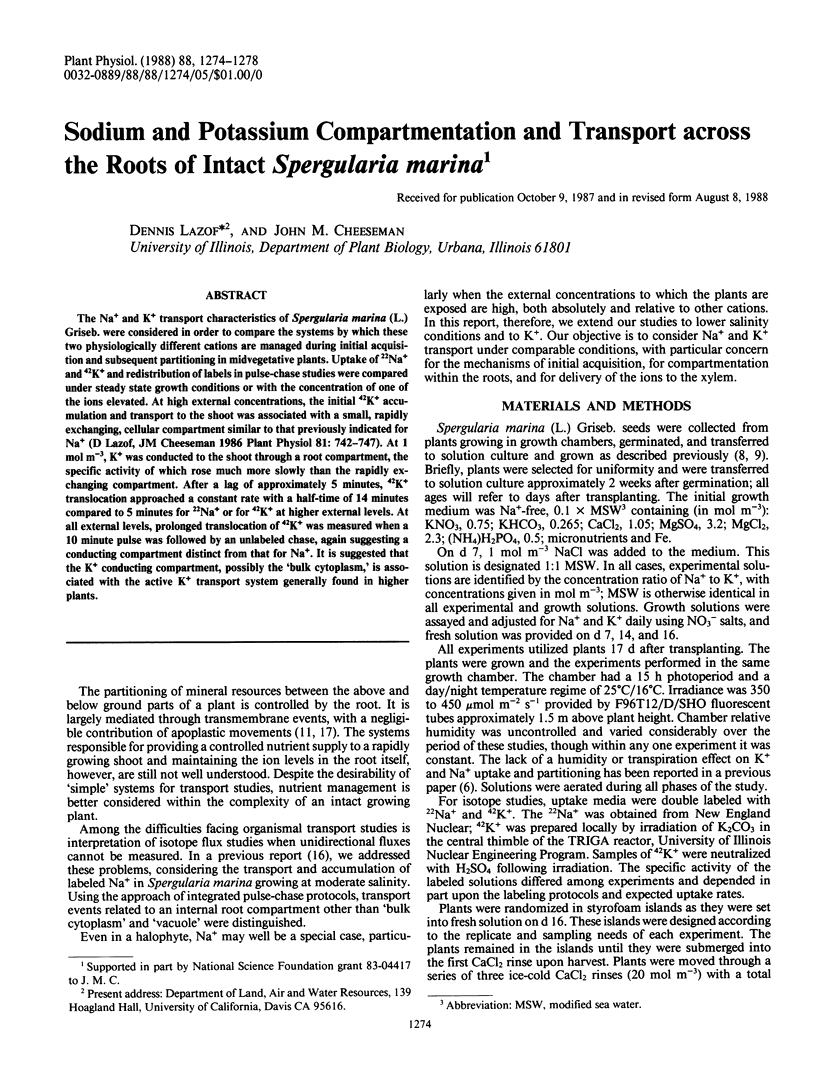
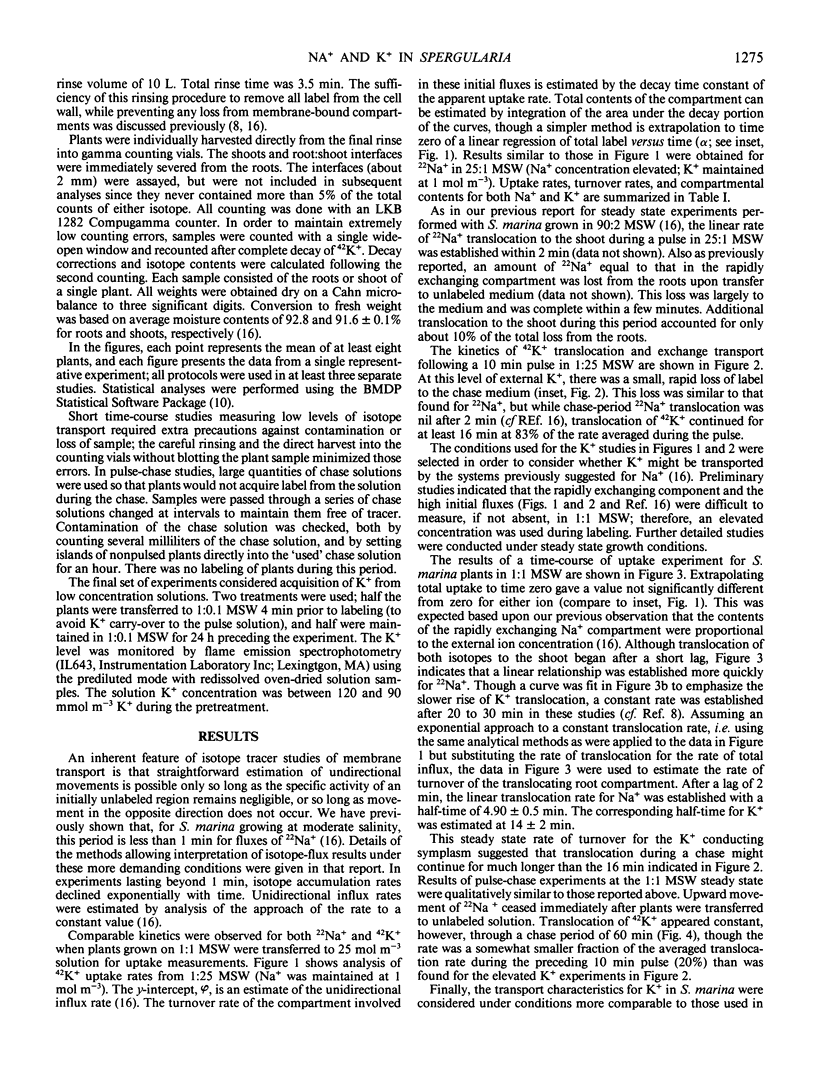
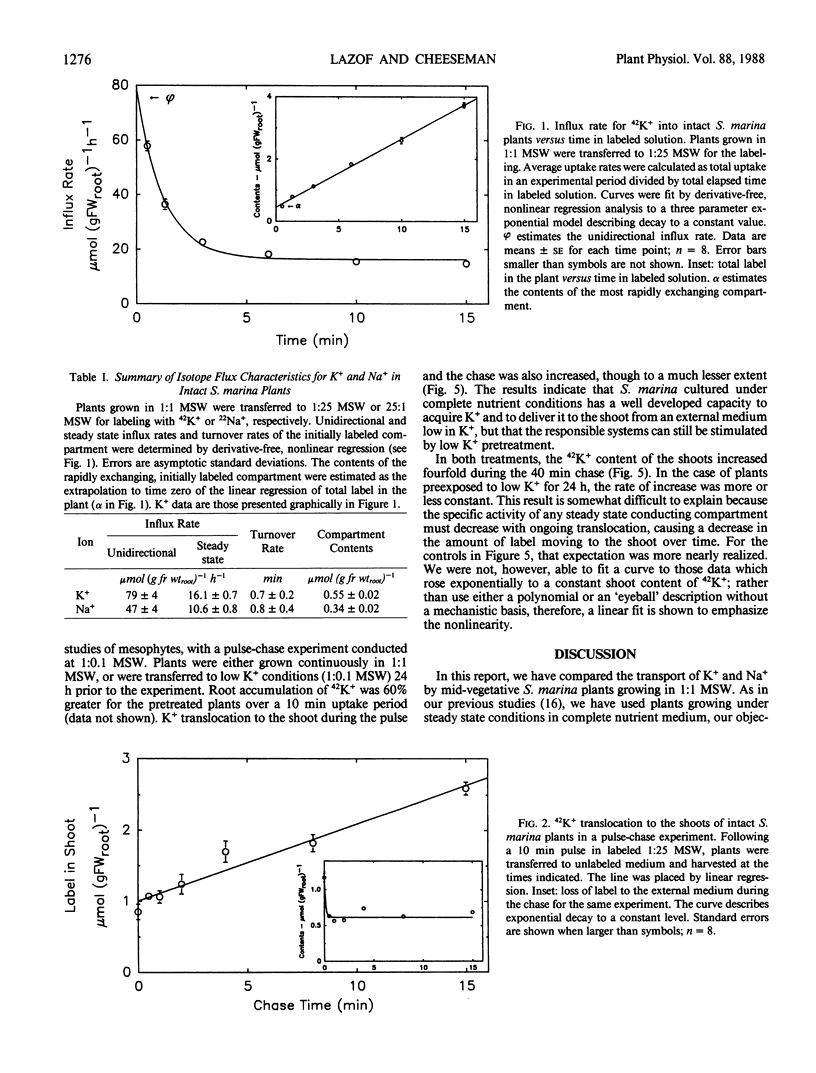
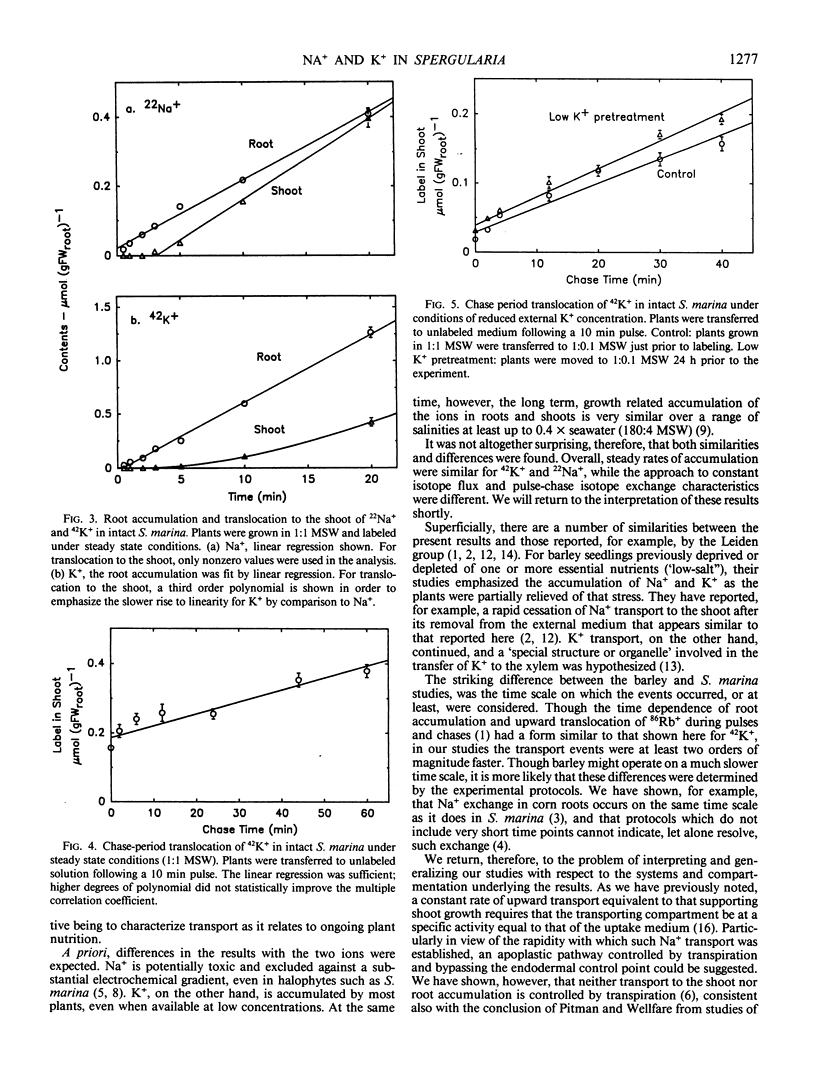
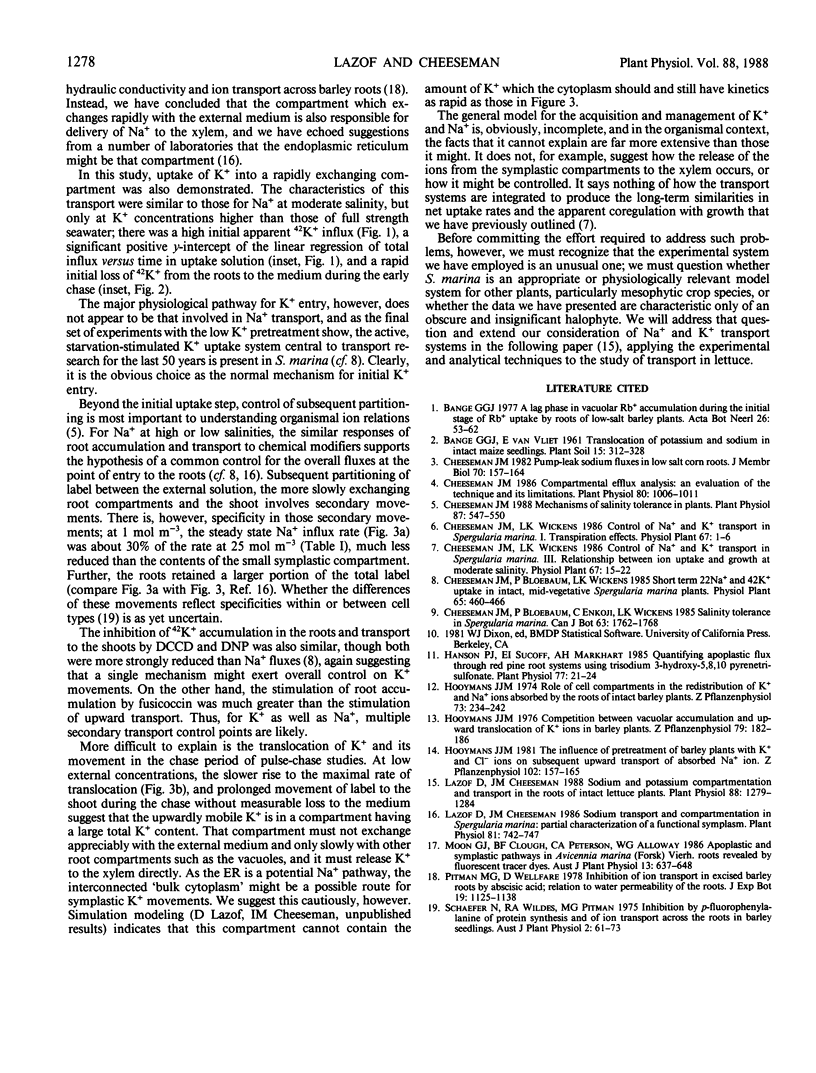
Selected References
These references are in PubMed. This may not be the complete list of references from this article.
- Cheeseman J. M. Compartmental efflux analysis: an evaluation of the technique and its limitations. Plant Physiol. 1986 Apr;80(4):1006–1011. doi: 10.1104/pp.80.4.1006. [DOI] [PMC free article] [PubMed] [Google Scholar]
- Cheeseman J. M. Mechanisms of salinity tolerance in plants. Plant Physiol. 1988 Jul;87(3):547–550. doi: 10.1104/pp.87.3.547. [DOI] [PMC free article] [PubMed] [Google Scholar]
- Hanson P. J., Sucoff E. I., Markhart A. H. Quantifying Apoplastic Flux through Red Pine Root Systems Using Trisodium, 3-hydroxy-5,8,10-pyrenetrisulfonate. Plant Physiol. 1985 Jan;77(1):21–24. doi: 10.1104/pp.77.1.21. [DOI] [PMC free article] [PubMed] [Google Scholar]
- Lazof D., Cheeseman J. M. Sodium Transport and Compartmentation in Spergularia marina: Partial Characterization of a Functional Symplasm. Plant Physiol. 1986 Jul;81(3):742–747. doi: 10.1104/pp.81.3.742. [DOI] [PMC free article] [PubMed] [Google Scholar]
- Lazof D., Cheeseman J. M. Sodium and potassium compartmentation and transport in the roots of intact lettuce plants. Plant Physiol. 1988 Dec;88(4):1279–1284. doi: 10.1104/pp.88.4.1279. [DOI] [PMC free article] [PubMed] [Google Scholar]


